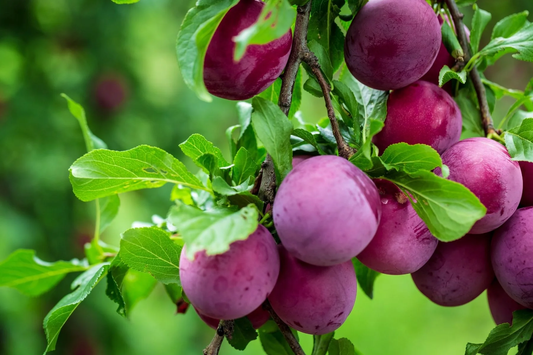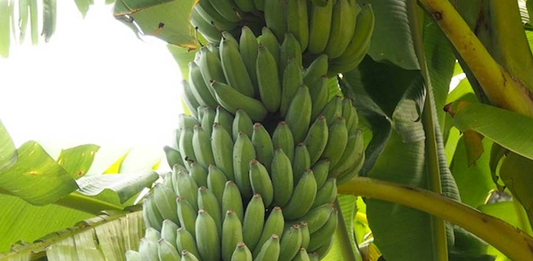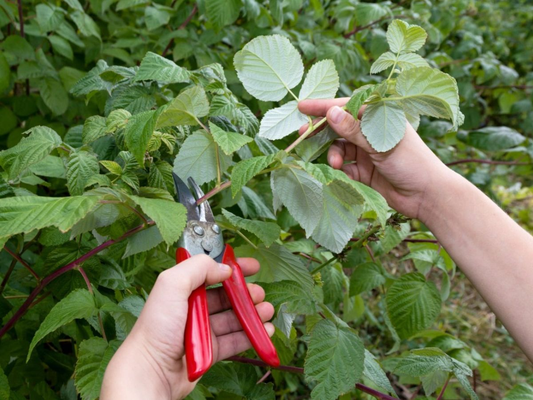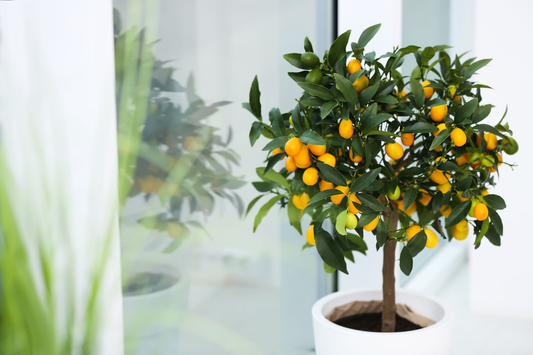Best Soil for Indoor Plants
Share
- 1. Introduction
- 2. Why Soil Quality Matters for Indoor Plants
- 3. Types of Soil for Indoor Plants
- 4. Characteristics of Ideal Soil for Indoor Plants
- 5. How to Choose the Right Soil for Different Indoor Plants
- 6. How to Mix Your Own Indoor Plant Soil
- 7. Signs Your Indoor Plant’s Soil Needs Attention
- 8. Repotting Indoor Plants: When and How to Change the Soil
- 9. Common Mistakes in Choosing Soil for Indoor Plants
- 10. Conclusion
- 11. Frequently Asked Questions (FAQ)
1. Introduction
Soil is one of the most important factors when it comes to growing healthy indoor plants. Just as the right environment, light, and water are essential for plant care, choosing the correct soil can directly impact the plant’s overall well-being. It provides the necessary nutrients, supports healthy root development, and helps retain moisture. Without the right soil, even the most well-cared-for plant may struggle to thrive.
Choosing the appropriate soil for indoor plants is crucial because:
- It affects root health: The right soil allows roots to access essential nutrients, while poorly-draining soil may lead to root rot or stunted growth.
- It helps manage water: Different plants require different moisture levels. For example, succulents need well-draining soil, while tropical plants thrive in moisture-retentive soil.
- It provides aeration: Soil with the right balance of organic matter and drainage helps provide oxygen to the plant’s roots, promoting healthy growth.
Indoor plants come in many varieties, and each type has specific soil requirements. Here’s an overview of common indoor plant types and the type of soil they need:
- Tropical Plants: These plants thrive in moist, well-draining soil with high organic content, such as peat moss, perlite, and compost.
- Cacti and Succulents: These plants need soil that drains well and doesn’t retain too much moisture. A sandy, gritty mix is ideal.
- Herbs: Light, loamy soil that drains well but retains some moisture is best for herbs like basil and parsley.
- Orchids: Orchids need a special mix, often consisting of bark, perlite, and sphagnum moss, to provide the right balance of moisture retention and aeration.
- Flowering Plants: These plants prefer a rich, nutrient-dense soil that drains well but also holds some moisture to support their blooming cycle.
Choosing the right soil is essential for helping your indoor plants flourish. By understanding the soil needs of different plants, you can ensure they receive the care and environment they need to thrive indoors.

2. Why Soil Quality Matters for Indoor Plants
Soil quality plays a critical role in ensuring the health and growth of indoor plants. It directly impacts several key factors necessary for plant development, including the availability of nutrients, water retention, and aeration. Let’s break down how soil influences these essential elements:
- Nutrient Availability: Soil acts as a reservoir for nutrients that plants need to grow. It contains essential minerals and organic compounds like nitrogen, phosphorus, and potassium, which plants absorb through their roots. Without the right balance of these nutrients, your plant’s growth may be stunted or uneven.
- Water Retention: Different plants require varying levels of water, and soil helps manage this need. Good quality soil should retain enough water to hydrate the plant, but not so much that it causes waterlogging, which can lead to root rot. For example, cacti and succulents need well-draining soil to prevent moisture buildup, while tropical plants require soil that retains moisture without becoming soggy.
- Aeration: Healthy soil has air pockets that allow roots to breathe. Oxygen is crucial for the root system, which needs it for respiration. If the soil is too compacted or dense, it limits root growth and prevents oxygen from reaching the roots, leading to poor plant health.
The pH level and texture of the soil also significantly impact plant health:
- Soil pH: The pH level determines how readily a plant can absorb nutrients. Most indoor plants prefer a slightly acidic to neutral pH (around 6-7), but certain plants, like azaleas or blueberries, thrive in more acidic soils. If the pH is too high or too low, nutrient uptake may be hindered.
- Soil Texture: Soil texture affects drainage and water retention. For instance, sandy soils drain quickly but do not retain water, while clay soils retain moisture but drain poorly. Finding the right balance in soil texture is key to keeping plants healthy.
3. Types of Soil for Indoor Plants
When selecting the best soil for your indoor plants, it’s important to understand the different types of soil available and their unique properties. Here’s a breakdown of some of the most popular soil types for various indoor plants:
Potting Soil
Description and Best Uses: Potting soil is the most common soil type used for general-purpose indoor plants. It provides a well-balanced environment for most plants, from houseplants to herbs and small flowering plants.
- Best Uses: Ideal for a wide range of indoor plants, including ferns, peace lilies, and pothos.
- Key Ingredients: Potting soil is typically made from a mix of peat moss, perlite, and sometimes vermiculite, which help retain moisture and provide good aeration to the roots.
Cactus and Succulent Soil
Description: Cactus and succulent soil is designed to provide quick drainage, preventing the roots from sitting in water, which can lead to rot. This type of soil is essential for plants that are adapted to dry, arid conditions.
- Best Uses: Ideal for cacti, succulents, and other drought-tolerant plants that require excellent drainage.
- Texture and Moisture Retention: The texture is sandy or gritty, and the moisture retention is minimal to ensure the soil doesn’t stay too wet.
- Key Ingredients: Typically includes sand, perlite, and pumice, which help the soil drain quickly and prevent waterlogging.
Orchid Mix
Description: Orchid mix is specially formulated for orchids and similar plants that require more airflow around their roots. Orchids naturally grow on trees or rocks, so their roots need a loose, airy medium.
- Best Uses: Ideal for orchids, bromeliads, and epiphytic plants that thrive with more air around their roots.
- Key Ingredients: Orchid mix often contains bark, sphagnum moss, and perlite, providing both structure and good airflow.
Coconut Coir
Description: Coconut coir is a sustainable, eco-friendly alternative to peat moss. It’s made from the fibrous material found between the shell and outer husk of coconuts.
- Best Uses: Excellent for plants that require good water retention but also need proper aeration.
- Water Retention: Coir is known for its water-holding capacity but needs to be combined with other ingredients to ensure good aeration for plant roots.
- Key Ingredients: Coconut coir is often used in combination with perlite or vermiculite to improve aeration and drainage.
Hydroponic Soil Alternatives (e.g., Clay Pebbles)
Description: Hydroponic growing systems use alternatives to traditional soil, such as clay pebbles or other inert mediums that support plant roots without soil. These mediums provide a stable structure for the plant while ensuring nutrients are delivered via water.
- Best Uses: Ideal for hydroponic systems where plants grow without traditional soil but require a medium for support and water retention.
- How It Works: Clay pebbles or similar materials allow water and nutrients to flow freely around the plant roots while offering support and preventing compaction.
- Key Ingredients: Common hydroponic alternatives include expanded clay pellets, rock wool, and perlite, which are designed to provide stability and aeration in non-soil-based systems.

4. Characteristics of Ideal Soil for Indoor Plants
The ideal soil for indoor plants has several key characteristics that contribute to healthy growth and development. These characteristics include the ability to retain moisture without becoming waterlogged, proper aeration and drainage, nutrient content, and the correct pH level. Let’s dive into these essential soil features:
Water Retention
Moisture Retention Without Waterlogging: One of the most important features of ideal soil is its ability to retain moisture without causing waterlogging. Soil that retains just enough moisture ensures that plants get the hydration they need without suffocating the roots. Overly wet soil can cause root rot, a common issue in plants, especially those that are sensitive to waterlogged conditions.
- Importance of Well-Draining Soil: Good quality soil for indoor plants should strike a balance between retaining moisture and allowing excess water to drain away. This is especially crucial for plants like succulents and cacti, which require dry conditions between waterings.
- Moisture-Retentive Soil: On the other hand, moisture-loving plants such as ferns or peace lilies benefit from soils that hold moisture but don’t stay soggy.
Aeration and Drainage
Preventing Root Rot: Proper soil aeration allows oxygen to reach the roots, preventing them from becoming suffocated in overly dense or compacted soil. Good aeration is essential for preventing root rot and promoting healthy root development, particularly for plants with shallow root systems.
- Types of Additives to Improve Drainage: To ensure proper aeration and drainage, many potting soils include additives like perlite, vermiculite, or sand. These materials help break up the soil and create space for air to circulate around the roots, preventing them from sitting in stagnant water.
- Perlite: Perlite is a lightweight volcanic rock that improves drainage and aeration without compromising moisture retention.
- Sand: Coarse sand is often added to soil mixes to increase drainage, especially in soils that are otherwise too heavy or clayey.
Nutrient Content
Rich Nutrients for Healthy Growth: Nutrient-rich soil is essential for healthy indoor plants. The right soil should supply the necessary nutrients for plant growth, including nitrogen, phosphorus, and potassium, as well as trace minerals like calcium, magnesium, and sulfur. These elements are vital for the plant’s overall health and development.
- Organic vs. Synthetic Fertilizers: Organic fertilizers, like compost or worm castings, provide slow-release nutrients and improve soil structure over time. Synthetic fertilizers, on the other hand, offer quick nutrient boosts but can sometimes lead to soil imbalances if overused. Organic soil amendments are generally better for long-term plant health.
- Soil Amendments: To enhance nutrient content, amendments like compost, bone meal, or fish emulsion can be added to potting soil. These provide natural, slow-release nutrients that support plant health.
Soil pH
Effect of pH on Nutrient Availability: Soil pH plays a crucial role in the availability of nutrients. Most indoor plants prefer a slightly acidic to neutral pH (6.0–7.0), as this range allows for optimal nutrient absorption. If the pH is too high or too low, certain nutrients may become less available to the plant.
- Adjusting pH for Specific Plants: Some plants, like blueberries or azaleas, prefer acidic soil (pH 5.0–5.5), while others, such as lavender and many herbs, prefer more alkaline soil (pH 7.5–8.0). To adjust pH, you can use lime to raise the pH or sulfur to lower it.
- pH Testing: It’s a good idea to regularly test the pH of your soil to ensure it remains within the ideal range for your plants. You can use a pH testing kit or pH meter to monitor and adjust the levels as needed.
5. How to Choose the Right Soil for Different Indoor Plants
Choosing the right soil for your indoor plants is crucial for their health and growth. Different types of plants have different soil needs based on their natural habitats and growing conditions. Here’s how to select the best soil for a variety of common indoor plants:
Tropical Plants
Soil Requirements: Tropical plants thrive in environments that are warm and humid, and they require soil that retains moisture but also drains well to avoid root rot. A good tropical plant soil mix typically contains a combination of organic matter like peat moss, pine bark, and perlite. These ingredients help retain moisture while also allowing excess water to drain freely.
- Soil Composition: A typical mix for tropical plants includes 40–50% peat moss, 25–30% pine bark, and 20–30% perlite or other light, airy materials.
- pH Levels: Most tropical plants prefer a slightly acidic soil pH between 5.5 and 6.5. This pH range ensures that nutrients are available to the plant while promoting healthy root development.
- Examples: Common tropicals include monstera, peace lilies, and ferns.
Cacti and Succulents
Soil Requirements: Cacti and succulents thrive in dry, well-draining conditions. They require a soil mix that provides excellent drainage and prevents the roots from sitting in water. A gritty, sandy mix is best for these plants, as it allows moisture to pass through quickly, reducing the risk of root rot.
- Soil Composition: Cactus and succulent soil often includes 50–60% sand or coarse grit, 20–30% perlite, and a small percentage of organic material like peat moss for some moisture retention.
- pH Levels: These plants prefer a slightly acidic to neutral pH (around 6.0 to 7.0). High pH levels can lead to poor nutrient absorption, so it’s important to test and adjust if necessary.
- Drainage: Drainage is key for these plants. Always use a pot with drainage holes and consider adding materials like perlite or pumice to the mix to increase drainage capacity.
- Examples: Popular cacti and succulents include the saguaro cactus, jade plant, and aloe vera.
Herbs and Edible Plants
Soil Requirements: Herbs and edible plants such as basil, mint, and parsley are light feeders, meaning they don’t require nutrient-rich soil. They prefer a well-draining, slightly acidic mix that promotes healthy root growth without retaining too much moisture.
- Soil Composition: A good mix for herbs typically includes 60% potting soil, 20% perlite, and 20% compost or organic matter.
- pH Levels: Herbs generally prefer slightly acidic soil, with a pH level between 6.0 and 6.5. Some plants, like basil and cilantro, may also tolerate slightly alkaline soil.
- Examples: Common herbs include basil, thyme, rosemary, and mint.
Ferns and Fern-Like Plants
Soil Requirements: Ferns and fern-like plants thrive in moisture-retentive soil that also provides adequate aeration. They generally prefer a slightly acidic to neutral pH and require a soil mix that holds moisture well but doesn’t become soggy.
- Soil Composition: A good fern soil mix contains 30–40% peat moss, 20–30% perlite, and 30–40% pine bark or compost to ensure both moisture retention and proper root aeration.
- pH Levels: Ferns typically prefer slightly acidic soil with a pH range of 5.5 to 6.5. This helps them absorb nutrients effectively while promoting healthy foliage growth.
- Examples: Popular ferns include Boston ferns, maidenhair ferns, and bird's nest ferns.
Flowering Plants
Soil Requirements: Flowering indoor plants, like violets and African daisies, require soil that drains well but also retains enough moisture to support vibrant blooms. Additionally, they need soil that is rich in nutrients to encourage flowering and healthy growth.
- Soil Composition: Flowering plant mixes often include 40–50% peat moss, 25–30% perlite for drainage, and 20–30% organic compost to ensure a steady supply of nutrients.
- Drainage and Nutrients: These plants need soil with good drainage, so adding perlite or vermiculite helps improve airflow around the roots. The soil should also be rich in nutrients to support flowering, with a balance of nitrogen, phosphorus, and potassium.
- pH Levels: Most flowering plants prefer slightly acidic soil with a pH of 6.0 to 7.0. Some plants, such as African violets, prefer slightly lower pH levels, closer to 5.5–6.0.
- Examples: Common flowering plants include African violets, geraniums, and begonias.

6. How to Mix Your Own Indoor Plant Soil
Mixing your own indoor plant soil is a great way to ensure your plants receive the proper nutrients, drainage, and moisture retention needed for healthy growth. Here's a step-by-step guide on creating a balanced potting mix, along with examples for different plant types and tips for adjusting the mix based on specific plant needs:
Step-by-Step Guide to Mixing Indoor Plant Soil
- Choose Your Base Ingredients: Start with a good-quality potting soil or peat-based mix as your foundation. This will provide the bulk of the mix and ensure a solid structure for your plants.
- Add Drainage Materials: To improve drainage and prevent root rot, mix in perlite, vermiculite, or coarse sand. These ingredients help create air pockets in the soil, allowing water to flow freely through and preventing the roots from sitting in water.
- Incorporate Organic Matter: Add compost, pine bark, or coconut coir to provide essential nutrients for plant growth. Organic matter is particularly important for plants that need a nutrient-rich environment, like tropicals and flowering plants.
- Mix Thoroughly: Use a large container or wheelbarrow to combine all the ingredients evenly. Ensure that the mix is well blended, with no clumps or dry pockets of material.
- Test and Adjust the pH: Test the soil’s pH using a pH meter or soil test kit. If the pH is too high (alkaline), add peat moss to lower it. For acidic plants, add lime to raise the pH to the desired level.
Example Soil Mixes for Different Types of Indoor Plants
- Tropical Plants: A mix for tropicals should be moisture-retentive yet well-draining. Try combining 40% peat moss, 30% pine bark, and 30% perlite or coarse sand. This mix ensures a balance between moisture retention and aeration, ideal for plants like peace lilies and monstera.
- Succulents and Cacti: Succulents and cacti prefer dry, gritty soil with excellent drainage. Use 50% coarse sand or pumice, 30% perlite, and 20% peat moss. This combination helps to maintain dry conditions, which are critical for these drought-tolerant plants.
Key Ingredients You Can Use
- Perlite: Improves drainage and aeration, helping to prevent root rot.
- Vermiculite: Increases moisture retention and aeration, often used in mixes for tropical plants.
- Sand: Adds weight and improves drainage, especially useful for succulents and cacti.
- Compost: Adds organic matter, providing essential nutrients for most plants.
- Pine Bark: Adds structure to the soil and improves drainage, especially for tropical plants.
- Coconut Coir: An eco-friendly alternative to peat moss, providing moisture retention and aeration.
Adjusting for Specific Plant Needs
- For Succulents and Cacti: Increase the amount of sand and perlite to create a well-draining mix. These plants need minimal moisture retention to avoid root rot.
- For Tropical Plants: Add more peat moss and compost to create a moisture-retentive, nutrient-rich mix. Tropical plants prefer soil that retains water but drains well to prevent sogginess.
7. Signs Your Indoor Plant’s Soil Needs Attention
Soil is the foundation of your indoor plant’s health, and it requires regular monitoring to ensure your plants thrive. Below are some key signs that indicate your plant’s soil may need attention:
Overwatering
- Soggy Soil and Root Rot: When soil retains too much moisture due to poor drainage, it can lead to root rot. Roots that are constantly submerged in water can’t absorb oxygen, causing them to decay and eventually kill the plant.
- Signs of Poor Drainage: If you notice that the water remains on the surface or takes too long to drain, it could indicate that your soil is waterlogged. You may also observe yellowing leaves, wilting, or a musty smell from the soil, all of which are signs of root rot.
Underwatering
- Compacted Soil: Soil that has become too compacted due to lack of aeration can lead to poor water retention and root growth. When soil is too dense, water runs off the surface rather than soaking in, leading to dry and brittle plants.
- Signs of Underwatering: If the plant’s leaves are curling, turning brown at the edges, or falling off, it may be a sign that the soil isn’t absorbing enough water. Dry, cracked soil is another indication that your plant isn’t getting the moisture it needs.
Nutrient Deficiency
- Soil Depletion: Over time, soil can lose its nutrients as the plant absorbs them. If you notice that your plant isn’t growing as vigorously or the leaves are turning yellow or pale, it may be a sign of nutrient deficiency.
- Symptoms of Nutrient-Poor Soil: Yellowing leaves, stunted growth, and poor flowering or fruiting can indicate that the soil no longer provides enough nutrients. Regular fertilization or soil amendments may be necessary to replenish essential nutrients.
Soil Compaction
- Restricted Airflow to Roots: Compacted soil creates a dense structure that limits the amount of oxygen and water that can reach the roots. This leads to stunted growth, weak plants, and poor root development.
- Reviving Compacted Soil: To revive compacted soil, gently loosen it with a tool like a fork or a small trowel. You can also add materials like perlite, sand, or compost to improve aeration and drainage.

8. Repotting Indoor Plants: When and How to Change the Soil
Repotting is an essential part of indoor plant care, allowing your plant to thrive by providing fresh soil, more room for growth, and better nutrient access. Here’s when and how to repot your indoor plants:
When is the Right Time to Repot?
- Plant Outgrows the Pot: If your plant’s roots have outgrown the container, becoming root-bound, it’s time to repot. Signs include roots growing out of the drainage holes or roots visible on the soil surface.
- Soil Looks Depleted: Over time, soil can lose its structure and nutrients. If you notice the soil compacting or your plant’s growth slowing down, it may be time to refresh the soil.
- Roots Are Crowding the Pot: If the plant’s roots are circling the inside of the pot or emerging from the drainage holes, this indicates the plant needs more space to grow.
How to Safely Remove Old Soil and Replace with Fresh Soil
- Prepare the New Pot: Select a new pot that is 1-2 inches larger in diameter than the current one. Ensure it has drainage holes to prevent waterlogging.
- Remove the Plant from Its Current Pot: Gently hold the base of the plant and tap the pot to loosen the soil. If necessary, use a small tool to ease the plant out.
- Loosen the Roots: Carefully untangle any circling roots. Trim off any dead or damaged roots using sterile scissors.
- Place Fresh Soil in the New Pot: Add a layer of fresh, appropriate soil at the bottom of the new pot. Place the plant in the center and fill around the roots with more soil, making sure not to bury the plant too deeply.
Tips for Avoiding Shock When Repotting
- Water the Plant Before Repotting: Ensure the soil is slightly moist to make it easier to remove the plant and prevent stress on the roots.
- Avoid Direct Sunlight: After repotting, place the plant in a location with indirect light to avoid shocking it with too much sunlight.
- Wait to Fertilize: Give your plant time to settle into its new soil before adding fertilizer, as new soil already contains nutrients.
Importance of Ensuring Proper Drainage
When choosing a new pot, make sure it has proper drainage holes. Good drainage prevents water from accumulating at the bottom of the pot, which can lead to root rot. Adding a layer of rocks or perlite at the bottom of the pot can also help improve drainage.
9. Common Mistakes in Choosing Soil for Indoor Plants
Choosing the right soil for your indoor plants is crucial for their health and growth. However, there are common mistakes many plant owners make when selecting soil. Here are some of the most frequent errors to avoid:
1. Choosing Soil That Doesn’t Drain Well
- Issue: Using soil that retains too much water can lead to root rot. Poor drainage prevents excess water from leaving the pot, suffocating the roots.
- Solution: Choose a soil mix with good drainage, such as potting soil that contains perlite or sand.
2. Using Garden Soil Instead of Potting Soil
- Issue: Garden soil is typically too dense and can compact in pots, leading to poor drainage and root growth.
- Solution: Always use high-quality potting soil, which is designed to be light and well-draining.
3. Not Matching the Soil to the Plant Type
- Issue: Different indoor plants have unique soil needs. For example, cacti need a gritty, well-drained mix, while tropical plants prefer moisture-retentive soil.
- Solution: Research the specific soil requirements of your plant species and choose accordingly.
4. Overusing Fertilizer or Adding Too Much Moisture-Retentive Material
- Issue: Too much fertilizer or moisture-retentive material like peat moss can create an imbalance, leading to nutrient burns or root suffocation.
- Solution: Follow the recommended fertilizer dosages and avoid excessive use of water-retentive ingredients unless needed for specific plants.
5. Over-Filling the Pot with Soil
- Issue: Filling the pot to the top with soil can prevent proper drainage and restrict root expansion.
- Solution: Leave some space at the top of the pot (about 1-2 inches) to allow for water absorption and air circulation.

10. Conclusion
Choosing the best soil for your indoor plants is a key factor in ensuring their health, growth, and overall well-being. The right soil provides essential nutrients, helps with proper moisture retention, and allows for adequate aeration to support root health. By selecting the appropriate soil mix tailored to the specific needs of your plants, you can promote thriving, vibrant greenery in your home.
Remember, every plant has unique soil requirements. Experimenting with different soil types—whether it's moisture-retentive mixes for tropical plants or well-draining options for succulents—can help you determine what works best for each plant. The right soil ensures that your plants receive the care they need to flourish.
As a final tip, always check your plants regularly for signs of stress, such as wilting, yellowing leaves, or root rot, which could indicate that the soil is not meeting the plant’s needs. By observing your plants and adjusting their soil conditions accordingly, you’ll keep them healthy and happy for years to come.
11. Frequently Asked Questions (FAQ)
Here are some common questions about indoor plant soil to help you maintain a thriving indoor garden:
1. What is the best soil for indoor houseplants?
- General Recommendation: The best soil depends on the type of plant. For most indoor houseplants, a general-purpose potting mix works well. However, for specific plants like succulents or cacti, opt for a soil mix designed for better drainage. Tropical plants benefit from a moisture-retentive mix.
2. Can I use outdoor soil for indoor plants?
- Why It’s Not Advisable: Outdoor soil is too dense and can contain pests or diseases that can harm indoor plants. It may also lack the proper drainage needed for container plants and could lead to root rot or poor growth.
3. How often should I change the soil for indoor plants?
- Timing: You should change the soil when your plant outgrows its pot, or when the soil appears compacted, depleted of nutrients, or no longer drains well. Typically, this happens every 1-2 years depending on the plant's growth rate.
4. Can I reuse soil from a repotted plant?
- Guidelines: Yes, you can reuse soil if it is in good condition. Refresh it by removing old roots and adding fresh compost or nutrients. However, if the soil is diseased or heavily compacted, it’s better to replace it.
5. How do I know if my soil has the right pH?
- How to Test and Adjust: You can test the pH of your soil with a simple pH test kit. Most indoor plants prefer a slightly acidic to neutral pH (6.0-7.0). To adjust the pH, add lime to raise the pH or sulfur to lower it, depending on the plant's needs.




